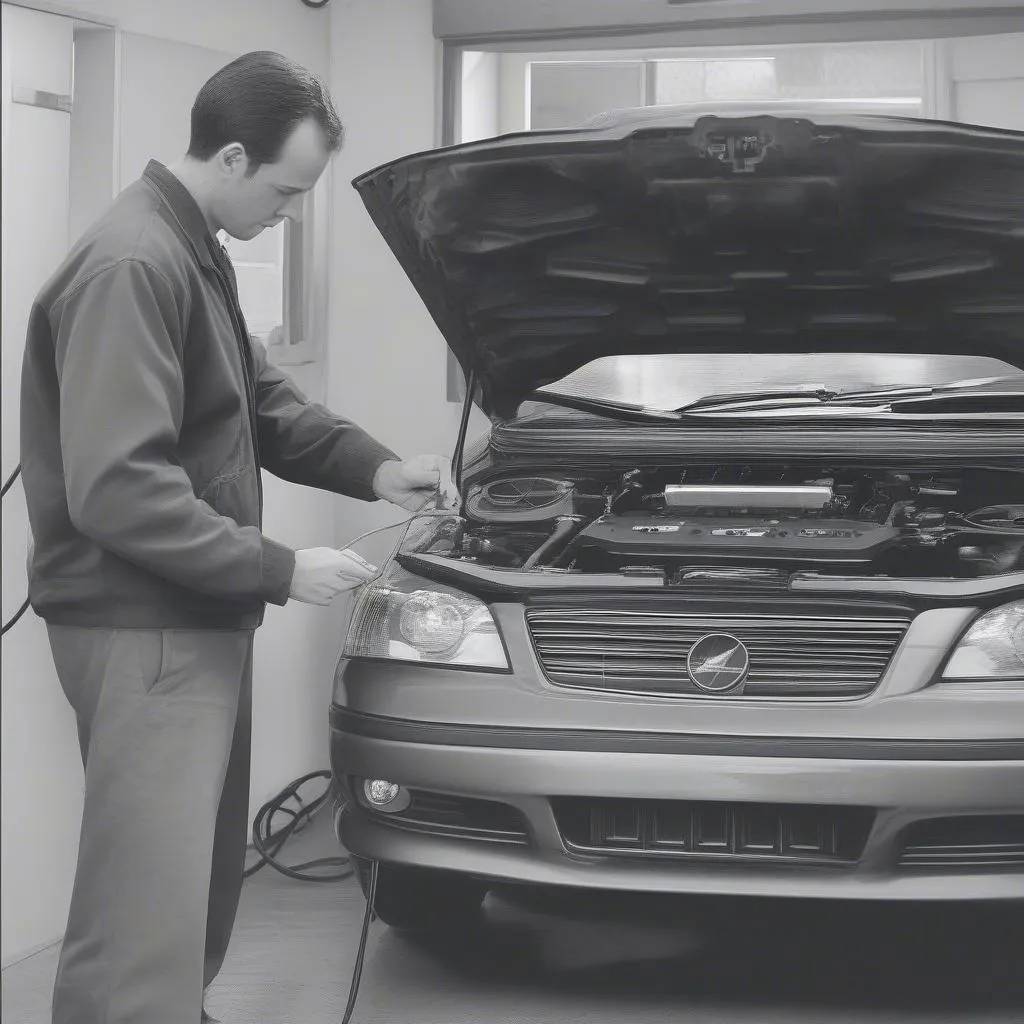Imagine you’re driving down the road, and suddenly your car starts sputtering and losing power. You pull over, check under the hood, and everything seems fine. Then you hear a faint clicking noise coming from the engine. This could be a sign of a failing fuel injector, and a scan tool can help you diagnose the problem.
What is Fuel Injector Testing with a Scan Tool?
Fuel injectors are responsible for delivering the precise amount of fuel to each cylinder in your engine. Testing fuel injectors with a scan tool is a process that uses an OBD-II scanner to check for potential issues with the fuel injectors, such as:
- Fuel Injector Leakage: Fuel injectors can leak fuel, causing the engine to run poorly.
- Fuel Injector Clogging: Clogged fuel injectors can prevent the proper amount of fuel from reaching the engine.
- Fuel Injector Short Circuit: A short circuit in the fuel injector wiring can cause the injector to malfunction.
- Fuel Injector Open Circuit: An open circuit in the fuel injector wiring can prevent the injector from working at all.
Why is Fuel Injector Testing Important?
Fuel injector testing is essential for ensuring your engine runs efficiently and smoothly. Failing fuel injectors can cause a number of problems, including:
- Reduced Fuel Economy: Leaky or clogged fuel injectors can lead to poor fuel economy, costing you more money at the pump.
- Engine Misfires: Misfires occur when the engine fails to ignite the fuel-air mixture in one or more cylinders. This can cause rough idling, engine hesitation, and a loss of power.
- Engine Damage: If left untreated, failing fuel injectors can lead to serious engine damage.
How to Test Fuel Injectors with a Scan Tool
Here’s a step-by-step guide on how to test fuel injectors with a scan tool:
- Connect the Scan Tool: Connect the OBD-II scan tool to the diagnostic port under your car’s dashboard.
- Access Fuel Injector Data: Using the scan tool’s menu system, navigate to the section that displays data related to the fuel injectors.
- Monitor Fuel Injector Pulse Width: Pay attention to the fuel injector pulse width readings, which indicate the duration of time that the injector is open.
- Check for Errors: Look for any error codes related to fuel injectors.
- Compare Readings to Specifications: If you have access to a repair manual, compare the fuel injector readings to the manufacturer’s specifications.
- Perform Live Data Monitoring: Observe the fuel injector data in real-time while the engine is running to see if there are any fluctuations or abnormalities.
Troubleshooting Common Issues
“Why are my fuel injector readings erratic?”
Erratic fuel injector readings can indicate a number of issues, including:
- Fuel Injector Leakage: This can cause the fuel injector to open and close unevenly.
- Fuel Pressure Problems: Low fuel pressure can also lead to erratic fuel injector readings.
- Dirty Fuel: Contaminated fuel can clog the fuel injectors and affect their operation.
- Faulty Fuel Injector Wiring: Damaged or faulty wiring can cause intermittent fuel injector signals.
“I found a fuel injector error code, what should I do?”
First, clear the error code and see if it returns. If the code persists, you’ll need to investigate further.
“My scan tool isn’t picking up any fuel injector data, what’s going on?”
If your scan tool isn’t picking up fuel injector data, it could be because:
- The scan tool isn’t compatible with your vehicle. Make sure you’re using a compatible OBD-II scan tool.
- The diagnostic port is faulty. If the port is damaged, the scan tool won’t be able to communicate with the vehicle’s ECU.
- The vehicle’s ECU is malfunctioning. A faulty ECU can prevent the scan tool from accessing fuel injector data.
Tips for Fuel Injector Testing
- Always follow the manufacturer’s instructions. Be sure to consult your vehicle’s repair manual for specific instructions on testing fuel injectors.
- Use a quality scan tool. Not all OBD-II scan tools are created equal. It’s important to use a reliable scan tool that can accurately measure fuel injector data.
- Don’t overlook the basics. Before you start testing fuel injectors, check the fuel pressure, fuel filter, and fuel lines for any problems.
- Consider Professional Assistance: If you’re not comfortable testing fuel injectors yourself, it’s best to consult a qualified mechanic.
Frequently Asked Questions
“Can I test fuel injectors without a scan tool?”
While it’s possible to test fuel injectors without a scan tool, it’s much more difficult and requires specialized equipment.
“How often should I test my fuel injectors?”
It’s a good idea to test your fuel injectors at least once a year, or more often if you notice any signs of engine problems.
“How much does it cost to replace fuel injectors?”
The cost of replacing fuel injectors varies depending on the make and model of your vehicle.
“Where can I buy a fuel injector tester?”
You can find fuel injector testers at most automotive parts stores.
Conclusion
Fuel injector testing is an essential part of maintaining your vehicle’s engine health. By using a scan tool, you can identify potential issues with your fuel injectors and prevent serious problems. Remember to always consult your vehicle’s repair manual for specific instructions and, if you’re unsure about anything, consult a qualified mechanic.
Let us know if you have any further questions about fuel injector testing with a scan tool. We’d be happy to help!
 testing-fuel-injectors-with-scan-tool
testing-fuel-injectors-with-scan-tool
 replacing-fuel-injectors
replacing-fuel-injectors
Need help finding the right diagnostic scan tool for your European car? Check out DiagXCar for a variety of options!
Connect with our team of experts on WhatsApp for immediate support: +84767531508


